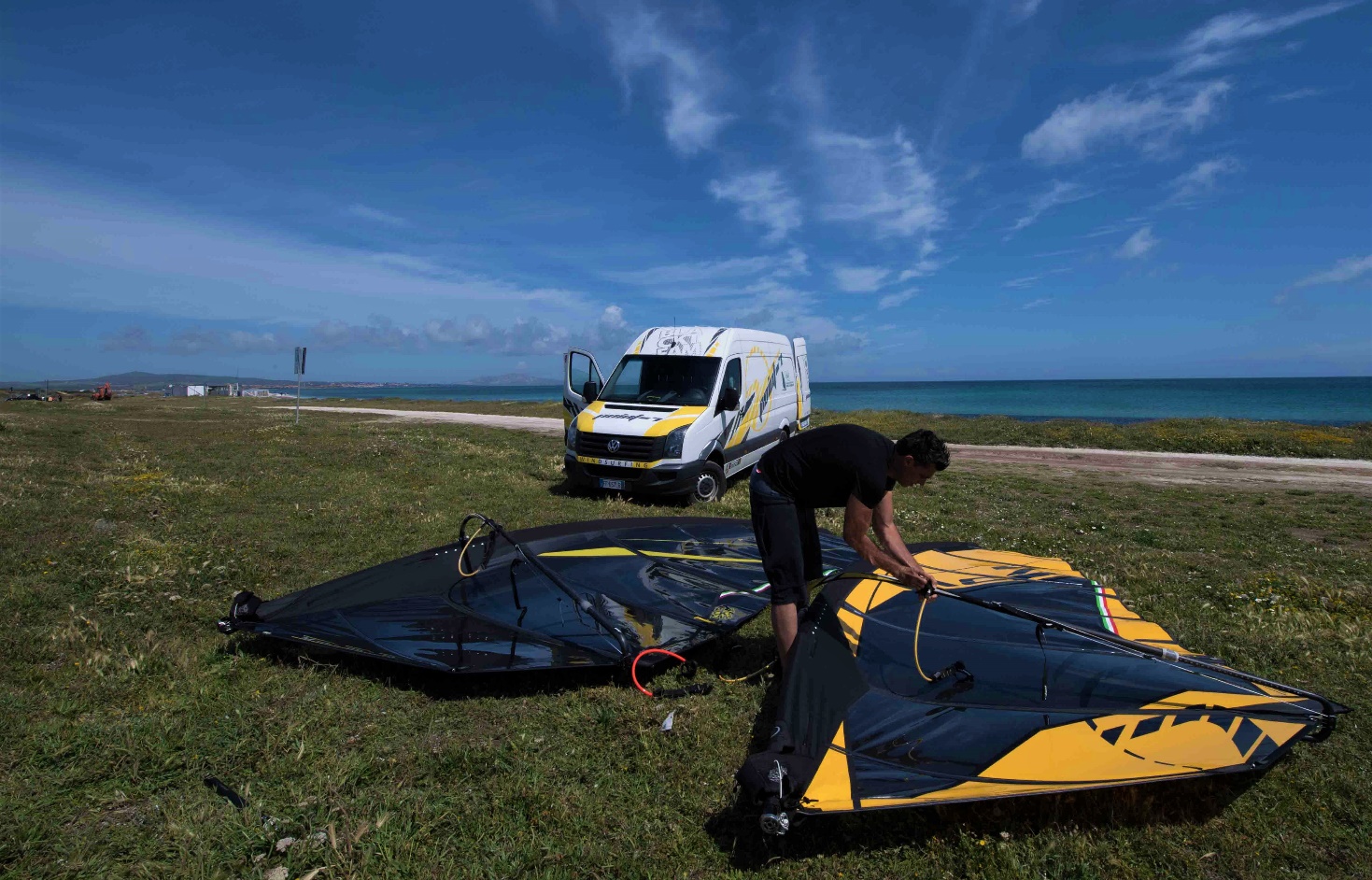TRIMMING YOUR CAMS IN YOUR SLALOM SAIL!
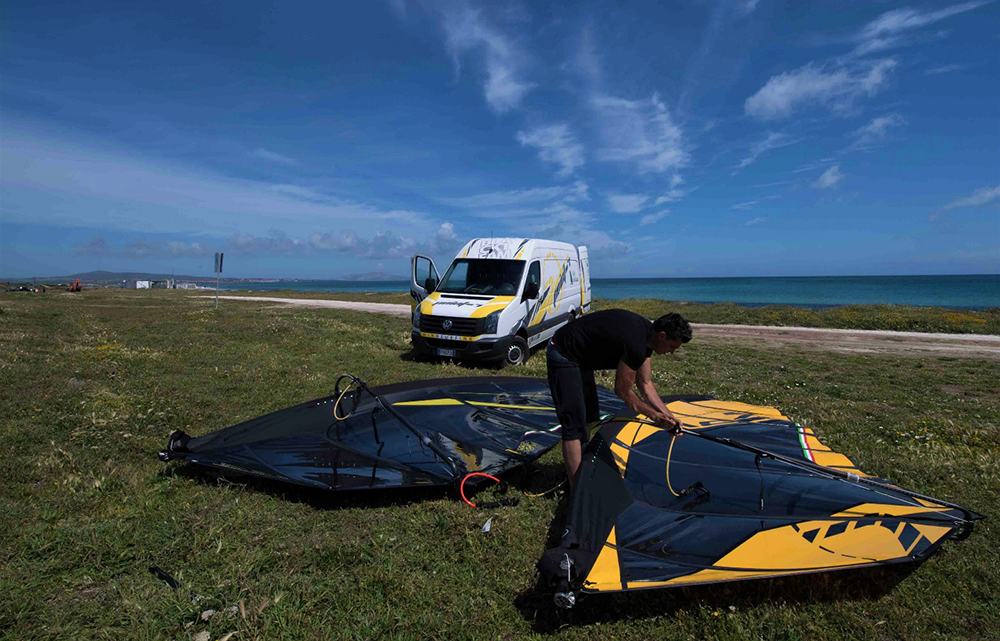
There are those who love them and those who hate them! There are those who hate them because the sails are difficult to rig, heavier to maneuver, more difficult to water start from the water, there are those who fear them in a jibe. Are you part of this category? Than you don’t need to read this, as you will enjoy more the non-cam sails, even if now the new AC-Z could be interesting for you to discover.
The camber gives a technical aspect to the sail that makes it more performing. Keeps the sail profile formed and despite gusts and wind holes, the sail remains more stable and comfortable. The difficulty of the camber is only when there is less technique from the windsurfer. It can be more difficult both on water and on land.
On land: If you rig a mast into a narrow mast sleeve of non-cam slalom sail, it’s more challenging than in a wide sleeve from a sail with cambers. Inserting cambers is an extra step, but with the right technique, it requires not more than 30 seconds, which in the end is the extra time that you need to put the mast in non-cam sleeve. The rest of the sail can be rigged at the same way as any other sail.
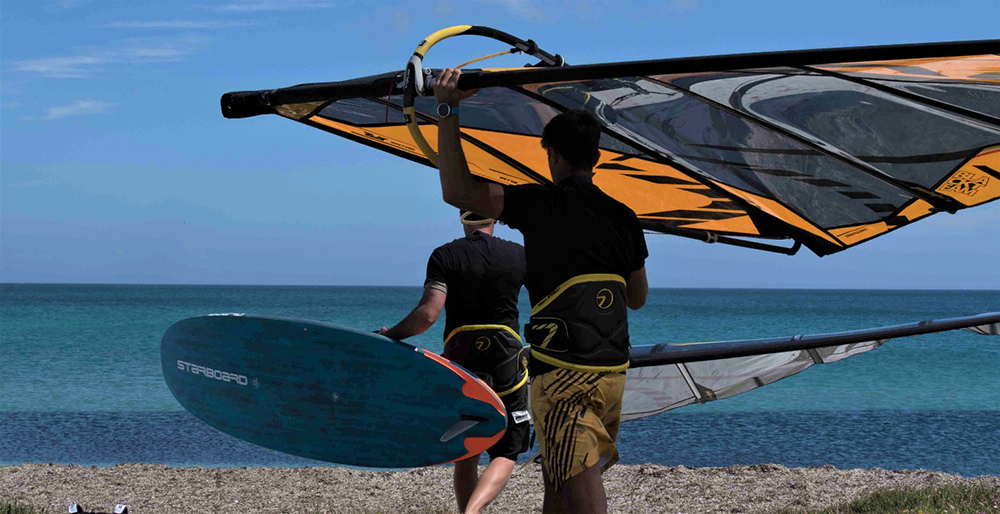
On the water: Even water starting from or uphauling a cam sail can be easier sometimes. The double sleeve acts as an airbag and the sail floats. If it goes underwater it is more challenging, but it is less tiring than what you think with the right technique. It’s about having just a little patience. The difficult part of a cambered sail is the jibe, especially when changing tacks. If you do not make a jibe with perfect timing, you risk that the rotation of the sail is not immediate, and this does not forgive. The cambers do not turn, and the sail could make you fall.
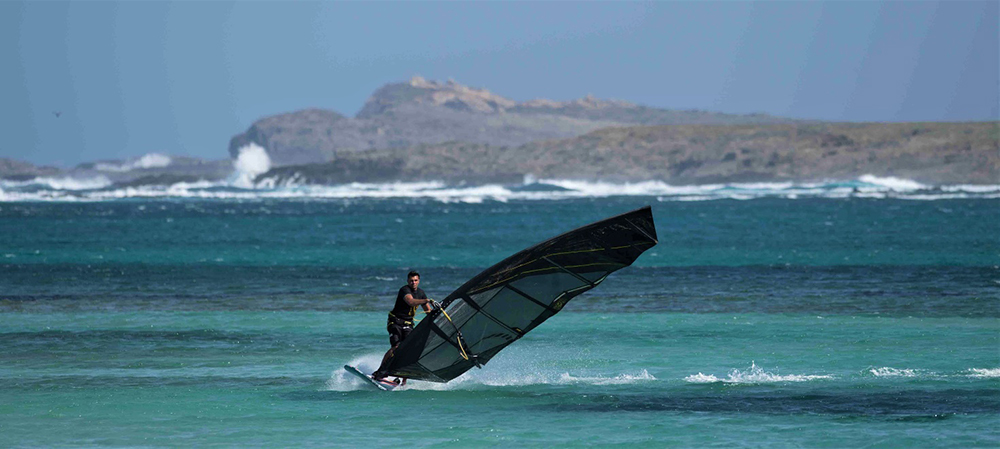
In this article we will teach how to trim the camber. There will be no technical lesson on how to jibe or water start or how to rig a cambered sail.
The camber is a very simple system that keeps the profile blocked, and makes it rotate with the help of the battens from one tack to the another.
The sails are given with the right camber pressure, so you should not work on the cams. It does happen that sometimes, due to the trim, different mast, different body weight or technique, some cambers in a sail could feel tighter (the sail has problem to rotate or fills hard to rotate), a bit lose (the cams are not having enough pressure and so the profile is not what we would like).
The more pressure is put on the cambers, the more the profile remains steady, stable and reactive. The sail becomes almost a single piece with the mast. The less pressure you put, the better the rotation of the sail in the change of tack.
We tend to load the race sails with more pressure on the lower cams, because they are used by more expert windsurfers who know how to jibe well, who do not fear a more violent rotation and are looking for maximum reactivity and power from the rig.
While in the more am slalom free race sails, the cambers have less pressure to facilitate a softer jibe, and still support a stable and soft profile, sometimes requiring less reactivity.
These settings, according to the type of sail, are the preset and each brand decides based on the performance they want to give to their sails and based on their usual customers. It is not just the camber who decides everything, but all the various characteristics of the sails: Number of battens, cambers, mast curve, leach tension, profile…
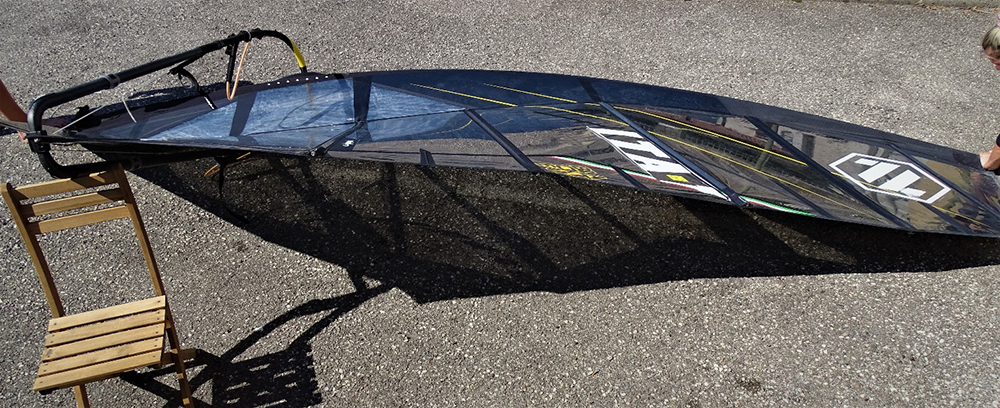
Let’s find out what’s behind the camber. One main thing is the length of the camber. It gives a profile entry, and the longer is the camber, the more leverage to help the rotation. In the same sail, the longer the camber, the less the profile. The shorter the camber the more the profile in the entry. In some places it is better to have a short camber for the power, and in others a longer one to give more speed to the profile. Only by changing this, the sail becomes completely different in feeling and performance. To be able to change the camber so radically to feel a difference, it is not possible to do so without putting the sail under the sewing machine. So, we leave this part to those who develop the sail, and we limit ourselves to manage the pressure on each camber to increase reactivity or rotation according to our likes.
Normally if you use the right mast the setting of the camber works as designed by the brand and you do not have to touch it. This is why most of the brands push to buy the right mast. It’s not about being constant or flex top, is about having the mast which was used to develop the sail.
All cambers need to have the right tension in order to rotate. This means that the pressure has to exist on the mast in order that the cam is touching but should not be extreme. The best is to have the lower cam with most pressure and each cam above to have less than the one below. Not extremely less, but a sensible less. Now days the cams are kind of wide and is not possible to push them with your hands to check rotation. Is not even possible to pump the sail in your garden with no wind and hope that it rotates.
The best way to check rotation is to put the sail on the ground with the profile looking up, the clew (back of the boom) on a chair, hold down on the extension on the ground, have a friend to push the top of the mast towards the ground. This way you simulate exactly what happens on the water. In this case, if you see that one camber has a hard time, or take longer to rotate than the others, it means that it has too much pressure. Ask your friend to push down on the mast slowly a second time to check again. If you have some doubts if you place your hand on the cam you feel that has too much, you can feel during the rotation also by how much it’s too tight.
- Do you have enough downhaul? If you put more the mast bends more and the cams are getting freer to rotate.
- If it’s too tight, is the boom the correct length? During the rotation the profile flattens, and the sail becomes longer. So, if the boom is too short, the sail will not fit, and it will not rotate.
- Try to loosen the batten tension by few rounds and see if this gives less pressure to the cam, and therefore rotate. Remember that battens should not be over tightened. They just need to remove the main wrinkles and not create any extra profile on top of what the sail gives. Often the batten under the boom and the top batten need a bit more pressure, the rest just really only remove the main wrinkles.
- If the cam under the boom is the tight one, is not sure that it’s tight, but just the lowest not having enough pressure, therefore the above one gets all the responsibility\pressure. So, check how that below cam feels before doing anything else. If it feels lose than try maybe to add a spacer. Rig the sail again, try the rotation with the system explained above, and if it works the problem is solved. Normally you have 2 size spacers in the sail. 2mm and 5mm. If you feel that the cam is pretty lose, this is surely 5mm, if it’s on the limit 2mm can be enough. Normally you should not put more than 2x5mm.
- If point 4 is not working than it’s really that camber under the boom that has too much pressure. What do we mean by pressure? The camber is inserted around the tip of the batten, and rests on its back on the sail, and on the front on the mast. Between one part and the other there is practically a space for it to fit. If the space is too tight for the camber, (therefore between mast and sail) the camber has more pressure, gives more ‘reactivity’ and could turn worse or with more ‘violence’ when you change tack. (If the space is too wide, the sail does not push the camber with force on the mast, the sail remains easier when maneuvering.) You need to work on that cam, by taking out and make it shorter. To make it shorter, you can cut off 3mm from the back of the cam, up to max 5mm. More should not be needed. To do a cleaner job, just file down by the same millimetres, the part of the cam that touches against the sail.
- If the sail is new and you feel the rotation is not that perfect, and the boom length is good, the batten tension is good, the downhaul is right, your jibing technique is not wobbly, the wind is not zero on the water in the moment of the jibe, give it few hours session to adapt, wait a second time you go on the water, as the mast and sail need to adapt to each other and stretch the right way.
Despite this, on some free race sail, the sail could be more ‘performant’ if you add some pressure to the lower cams. On race sails, giving a softer pressure could help you to have the performance, but with a sweeter rotation. With the following article you should be able to now trim and personalize your cams to your best preferences.
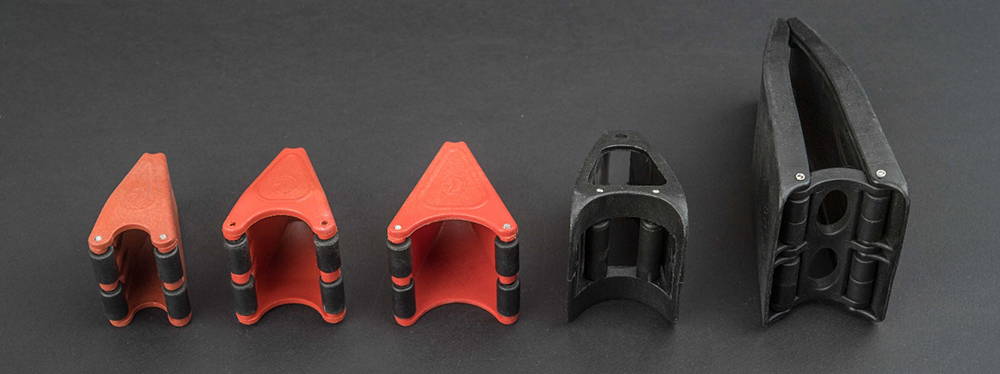
If you need any battens or spare parts, check our spare part online shops section »
Hope it helps!


